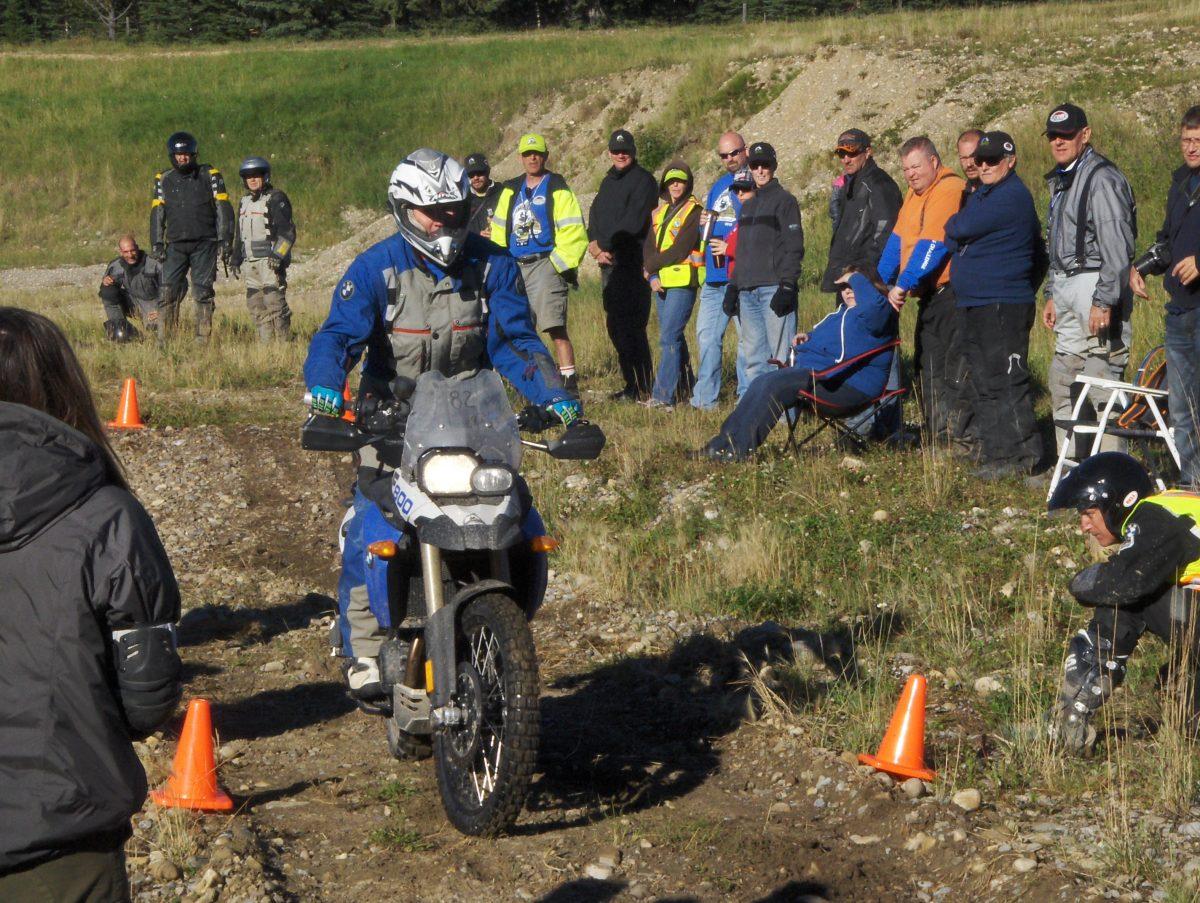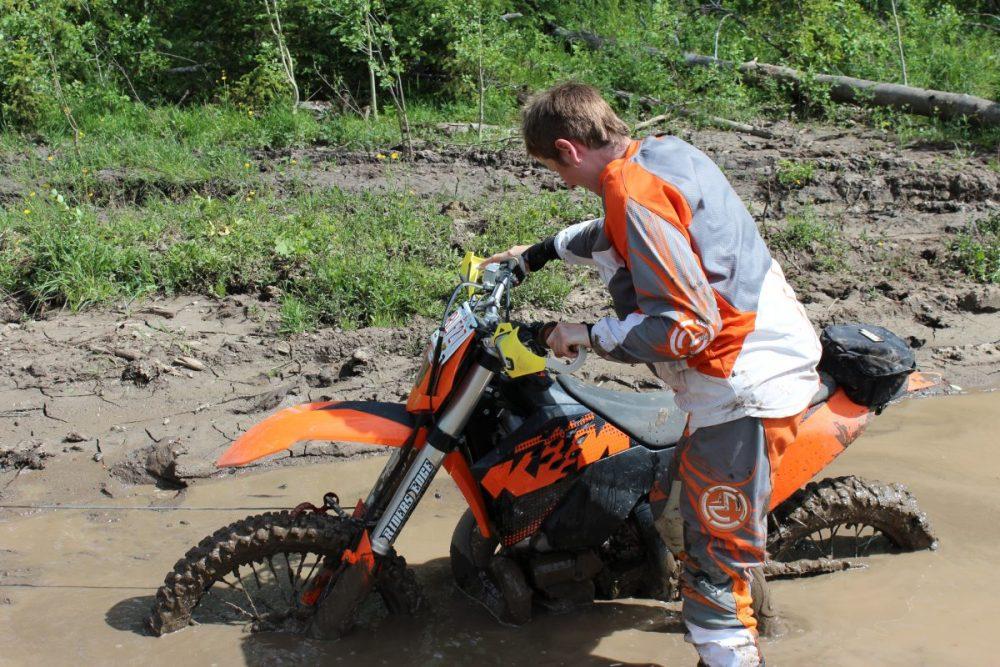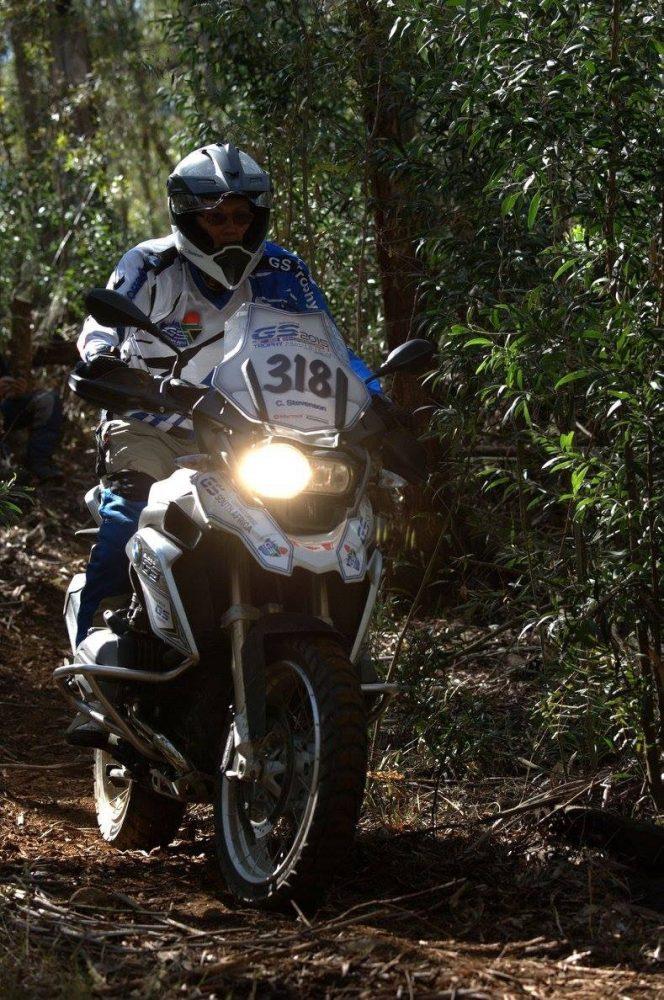
How to survive being cross rutted
BY PAT JACQUES
Cross rutting happens when the front wheel gets caught in one rut and the back wheel gets stuck in a different rut. Usually, when a rider gets cross rutted, they’ve made a mistake. Cross rutting often results in a hard crash as the rear wheel of the bike hooks up and high sides the rider. The technique to safely ride out a cross rut is called “grinding.” More on that later. First we’ll talk about proper rut riding techniques.

Many new or inexperienced off road riders consider ruts to be truly evil. But, what if they’re not? What if ruts are your BFF? Believe it or not, they can be! There are several advantages to riding a rut. First, ruts keep your wheels fairly stable and locked into a specific path. This comes in pretty handy in slippery conditions or when you’re trying to maintain speed railing a corner. Secondly, ruts can give you great traction cause the knobs on the sides of the tire can grip. Also a nice feature in slippery conditions! Thirdly, ruts effectively drop the seat height of our tall off road bikes and can make it easier to dab or paddle through tricky sections. That said, super deep ruts can be problematic as foot pegs drag making it near impossible to ride a section.

The biggest mistake many riders make is to “fight the rut.” Once you drop into a rut, you’re not going to get out of it. Turning the handle bars and forcing the issue is sure to result in a crash. The best thing to do is slow down, soften into the line the rut is taking you, and look for a transition area where the edges of the rut are not so deeply cut. That transition is the spot to change lines. If the rut is deep and just keeps heading farther and farther into a bad area, it’s best to stop, and physically pick up one wheel at a time and move the bike out of the rut.
When approaching ruts, slow down and ride standing up looking ahead. Look for one long rut through the entire section. Look for shallow ruts versus deeper ruts. Look for transition areas that allow you to move from one rut to another. Once you decide your line, allow the bike to drop in and relax into the flow of the rut. Don’t fight it. The rut will determine where you’re going. It’s imperative to stay balanced in the rut.

If the surface is very slippery, you may consider sitting down and dabbing or paddling your way gently through the rut. In really extreme slippery conditions, it’s helpful for the rider to be assisted by two people walking on either side of the bike- usually back by the pannier rack. That way the helpers stay out of the way but can help keep the bike upright and balanced.
In order to master ruts, riders need to practice them. Start with small, fairly straight ruts. Practice riding slowly standing up, looking ahead, and staying balanced. As your skill improves, look for deeper more complicated ruts where there are multiple lines where you need to move from one to the other. Practice using smoother transitions to change lines. It won’t be long before you feel confident riding ruts and find yourself increasing speed and actually looking for ruts to help you hold your line!

Now let’s get back to being cross rutted. It happens. Despite our best efforts the font wheel winds up in one rut and the back wheel in another. The key to riding out is steer into the direction of the rut with the front wheel, keep weight forward, on the front wheel side, and keep the back wheel sliding sideways. If the back wheel hooks up, riders will likely high side. For me, this can feel a lot like a power slide, only you’re more or less moving in a straight line.
“Grinding” is an advanced technique that uses a log to simulate being cross rutted. Grinding also simulates what it feels like to have your front wheel over a ledge on a climb, while the back wheel skates sideways trying to hook up.
BMW Off Road Instructor Caroline Stevenson is teaching at the ADV Woman Rally in July. She makes this technique look effortless, even on a massive BMW R1200GS. Here, Caroline describes this skill:
For sure if you are in a rut either crossed on a raised portion or the rear is low in a rut and front up on a high portion the grind will definitely work.
When done as just the log grind, weight is forward and mostly on the front wheel side peg. You have to keep a strong upper body and keep the bars turned into the log. The front wheel must be turned into and touching the log at all times. The rear will try to push the front away so you fight this by holding the front in. The minute the front comes away you start to lose control.
Keeep the rear sliding. The lack of traction is what help the tyre slide down the log or rut. If you allow the tyre to gain drive it will try to climb log and chances are you fall over because the tyre is at an angle to the log at this point.
Angle of entry is not important in a rut. You’re in it and now you have to ride it out. But on the log grind the angle is important. And you don’t even have to catch a lot of speed. When you enter you just have to get the rear slipping immediately or it won’t work. I use my knee into the tank as well as the bars. It really forces the bike in. The rut I think requires more body because you don’t have a lot to force the bike into the log.

Caroline demonstrates “Grinding” in the following video.
https://vimeo.com/210758032
Happy Trails Adventure Sisters!
PHOTOS: CAROLINE STEVENSON
 Pat’s passion is empowering women through personal and motorcycle coaching. She’s been riding, racing and teaching motorcycling over 40 years. She has a unique talent for breaking skills into teachable pieces, inspiring confidence, and helping riders to achieve tremendous success.
Pat’s passion is empowering women through personal and motorcycle coaching. She’s been riding, racing and teaching motorcycling over 40 years. She has a unique talent for breaking skills into teachable pieces, inspiring confidence, and helping riders to achieve tremendous success.
TRAIN AND RIDE WITH PAT: ADV WOMAN

